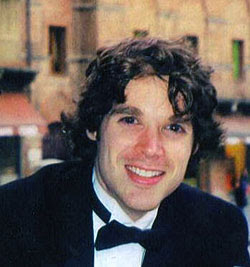 The Brooklyn Museum will celebrate the major exhibition “American High Style: Fashioning a National Collection” and the landmark collection-sharing partnership between Brooklyn and the Metropolitan Museum of Art at its annual gala, the Brooklyn Ball, on Thursday evening, April 22, 2010.
The Brooklyn Museum will celebrate the major exhibition “American High Style: Fashioning a National Collection” and the landmark collection-sharing partnership between Brooklyn and the Metropolitan Museum of Art at its annual gala, the Brooklyn Ball, on Thursday evening, April 22, 2010.
The event will begin at 6:30 p.m. with cocktails and hors d’ oeuvres in the Morris A. and Meyer Schapiro Wing on the fifth floor and an exclusive opportunity to preview American High Style. Featuring some eighty-five masterworks from the newly established Brooklyn Museum Costume Collection at the Metropolitan Museum of Art, the exhibition traces the evolution of fashion in America from its nineteenth-century European beginnings through the twentieth century. It marks the first time in more than two decades that a large-scale survey drawn from this preeminent collection will be on public view.
Included in the exhibition will be creations by such legendary American designers as Charles James, Norman Norell, and Gilbert Adrian- works by influential French designers including Charles Frederick Worth, Elsa Schiaparelli, Jeanne Lanvin, Givenchy, and Christian Dior- and works by such first-generation American women designers as Bonnie Cashin, Elizabeth Hawes, and Claire McCardell. Among the objects presented will be Schiaparelli’s Surrealist Insect Necklace, considered by experts to be one of the most important works in the collection- elaborate ball gowns and day wear by Charles James- evening ensembles by Yves Saint Laurent, Halston, Scaasi, and Mainbocher- street wear by mid-twentieth-century designers Vera Maxwell, Claire McCardell, and Elizabeth Hawes- a group of hats by celebrated milliner Sally Victor- and dazzling evening wear by Norman Norell.
The Brooklyn Museum’s groundbreaking collection-sharing partnership with the Metropolitan Museum of Art went in to effect in January 2009. At that time Brooklyn’s renowned costume collection of 23,500 objects, acquired over the course of a century, was transferred to the Costume Institute of the Metropolitan Museum of Art, where it is fully integrated into the Institute’s program of exhibitions, publications, and education initiatives and remains available for exhibition at the Brooklyn Museum.
Co-chairs for this year’s Ball celebrating American High Style include chef and restaurateur Mario Batali and his wife Susan Cahn, European Editor-at-Large for Vogue Hamish Bowles, New York Times Style Editor Stefano Tonchi, Museum Trustee Stephanie Ingrassia, decorative arts specialist and educator Susan Weber, photographer Annie Leibovitz, fashion designer Zac Posen, and collector Carla Shen.
An interactive dining experience, designed by Jennifer Rubell, whom New York Times senior critic Roberta Smith credits with “laying waste to the prolonged ordeal that is the benefit dining experience,” will begin at 8 p.m. in the magnificent Beaux-Arts Court on the third floor. The interactive food journey through the Museum is titled Icons and includes drinking paintings, suspended melting cheese heads, and a larger-than-life dessert surprise. A hybrid of performance and installation art, Rubell’s food projects deconstruct the ritual of the meal and are often of monumental scale.
During the evening, the Brooklyn Museum will honor the Andrew W. Mellon Foundation and former Mellon Program Officer Angelica Rudenstine. Donald Randel, Mellon Foundation president, will accept the Museum’s highest honor, the Augustus Graham Medal, on their behalf.
Immediately following the Ball, the Museum will host High Style: The After Party in the Martha A. and Robert S. Rubin Pavilion. The festivities will feature artists’ fashions and dancing to live music.
Tickets to the Ball range from $500 to $1,500, and tables are available from $5,000 to $50,000. All tickets to the Ball include admission to High Style: The After Party. Tickets to the after party start at $75. Tickets may be purchased online through Monday, April 19. You may also download, print, and complete a ticket request form and send it by fax to (718) 501-6139. Further information about ticket options and table purchases is available by e-mailing [email protected] or by phoning (718) 501-6423. Proceeds from the event will support the Museum’s public and education programs.
The Augustus Graham Medal is being presented to the Andrew W. Mellon Foundation in recognition of its outstanding support of the Brooklyn Museum, including funding for the survey of the costume collection and the endowment of curatorial positions at the Museum. Through the foundation’s generosity, the first complete inventory, collection review, digital photography, and cataloguing of the Museum’s holdings of approximately 23,500 American and European costumes and accessories has been completed. More than 5,800 of the most important works are now available to scholars, students, and the public through ARTstor, an innovative online initiative of the Mellon Foundation that provides access to curated collections of art images and associated data for noncommercial, scholarly, and not-for-profit educational use.
The Augustus Graham Medal is named after one of the founders of the Brooklyn Apprentices Library in 1823. That institution, which Graham nurtured and expanded, grew into the Brooklyn Institute and later became the Brooklyn Museum.
Sunday, October 10th, from 1-3 p.m., at Olana State Historic Site, the New York 77th Regimental Balladeers will reenact musical selections from the Civil War era.









